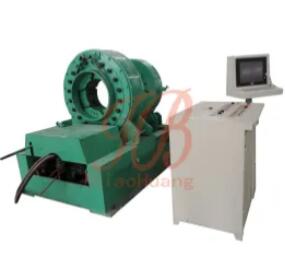10 Essential Facts About Bucking Machines Every Buyer Should Know
When purchasing a bucking machine, understanding its features, uses, and industry standards is essential. In this article, we’ve compiled 10 crucial facts about bucking machines to help you make an informed decision. Let’s dive into the details.
1. What Are Bucking Machines?
Bucking machines are specialized tools designed to remove flowers or buds from plant stems efficiently. These machines are widely used in agriculture, especially in cannabis and hemp processing. Their primary purpose is to save time and labor compared to manual bucking.
2. Types of Bucking Machines
There are various types of bucking machines available in the market. They can be broadly categorized into:
| Type | Key Features | Best For |
|---|---|---|
| Single-Feed Machines | Processes one stem at a time | Small-scale operations |
| Multi-Feed Machines | Handles multiple stems simultaneously | Medium to large-scale operations |
| Industrial Buckers | High capacity, continuous feed | Large-scale industrial use |
3. Key Components of a Bucking Machine
Bucking units typically consist of a motor, feed slots, and rollers. The motor powers the rollers, which strip the buds from stems as they pass through the feed slots. Higher-end models may include variable speed controls and easy-to-clean components.
4. The Importance of Feed Slot Size
Feed slot size directly impacts the machine’s efficiency. Machines with multiple slot sizes can handle various stem diameters, making them more versatile. Always choose a model that accommodates your crop size.
5. Speed and Efficiency
Bucking machines can process up to 100 pounds of plant material per hour, depending on the model. Multi-feed machines and industrial models are designed for higher efficiency. When selecting a machine, consider your production scale and desired processing speed.

6. Material and Build Quality
High-quality materials such as stainless steel are crucial for durability and hygiene. Poor-quality machines may corrode over time or fail to meet sanitation standards required in agriculture industries.
7. Maintenance and Cleaning
Easy maintenance is essential for long-term use. Look for models with removable components and straightforward cleaning procedures. Some machines are dishwasher-safe, saving additional time and effort.
8. Noise Levels and User Comfort
Industrial bucking machines can be noisy, potentially impacting worker comfort. Opt for machines with noise-reduction features or quieter motors, especially in indoor settings.
9. Cost and ROI
Bucking machines range from $5,000 to over $20,000. While the initial investment may seem high, their efficiency can significantly reduce labor costs, offering a return on investment within a few months.
For example, a hemp farm processing 50 pounds per day saved $15,000 in labor costs within six months by switching to a multi-feed bucking machine.
10. Recommendations from Industry Experts
Influencers and industry professionals recommend brands such as Twister and CenturionPro for their reliability and customer support. According to John Green, a hemp farming consultant, “Investing in a high-quality bucking machine transformed our operation, reducing costs and increasing productivity.”
Final Thoughts
Purchasing a bucking machine is a significant investment that can streamline your agricultural processes. By understanding the types, features, and benefits of bucking machines, you’ll be better equipped to make the right choice for your needs. If you’re ready to explore your options, start by identifying your production scale and reaching out to reliable manufacturers for more information.

